Design of space optical backbone network simulation platform based on OPNET and STK
-
摘要: 空间光骨干网络是我国空间信息网络的核心。为了对空间光骨干网络中的协议体系、网络架构和关键技术进行可行性验证,开发了基于OPNET和STK(satellite tool kit,卫星工具包)联合的空间光骨干网络仿真平台。设计了由4颗GEO卫星组成的天基骨干网、由10颗LEO卫星组成的天基接入网;开发了由物理层到应用层的光网络协议仿真模型和LEO、GEO、地面站3种节点进程模型,对光骨干网络进行了仿真测试。仿真结果表明:空间光骨干网络最大时延为5.48 s,最小为0.35 s,网络全局平均时延为1.06 s,地面站实时吞吐量最大值为0.88 Gb/s,最小为0.3 Gb/s,证明该平台可准确模拟空间光骨干网络功能,满足空间业务高效传输的需求,为空间光骨干网络性能验证提供仿真平台支持。Abstract: The space optical backbone network is the core of China's spacial information network. In order to verify the feasibility of the network protocol, the network architecture and the key technologies in the space optical backbone network, a space optical backbone network simulation platform based on OPNET and satellite tool kit(STK) was designed.A space-based backbone network consisting of 4 geostationary earth orbit (GEO) satellites and a space-based access network consisting of 10 low earth orbit (LEO) satellites were designed.And the optical network protocol simulation model from the physical layer to the application layer and the 3 node process models of LEO, GEO and ground stations were developed, moreover, the optical backbone network was simulated and tested. The simulation results show that the maximum delay of the space optical backbone network is 5.48 s, the minimum is 0.35 s, and the global average network delay is 1.06 s. The maximum real-time throughput of the ground station is 0.88 Gbps with a minimum of 0.3 Gbps. The research results indicate that the platform can accurately simulate the function of spatial optical backbone network, meet the needs of efficient transmission of space services, and provide simulation platform support for spatial optical backbone network performance verification.
-
引言
随着我国航天遥感卫星对地分辨率正式跨入亚0.5 m的时代,各类遥感器的口径也纷纷向着1 m甚至更大的领域发展。光学镜头的体积增大,随之而来的就是对各个光学元件之间同轴度的更高要求,因为哪怕秒级的角度偏转都会带来毫米级的位置偏差。而在整个镜头的装调过程中,主镜的光轴通常都是其他光学元件的装调基准轴,对于主镜光轴的引出精度,不仅关系到整个光学系统的成像质量,甚至还会导致光学系统与镜头结构相互干涉,无法顺利完成装配。
传统的主镜光轴引出方法主要通过三坐标仪测量镜面各点的空间坐标,通过曲面拟合得出光轴方向,确定光轴与基准面的角度关系。由于三坐标仪的测量范围有限且测量误差会随着被测物体尺寸增大而增大,以GLOBAL三坐标仪为例,其空间测量范围为1 000 mm*700 mm*700 mm,测量精度为1.9 μm+L/333 μm(其中L单位为mm)。除此之外,在曲面拟合过程中非球面的拟合计算也会带入角度误差,直径1 m的高次非球面镜光轴引出精度约为8″,已无法满足现下的遥感器装调精度要求。而且,随着镜头分辨率要求的逐步增长,采用1 m以上的非球面主镜已成为遥感器镜头的常态,三坐标仪的测量范围也不再能够满足大口径镜头的装调要求。
为解决大口径反射式光学镜头主镜的光轴引出问题,鉴于共轴反射式镜头的主镜(除R-C系统外)多为椭球面与抛物面,文中提出一种应对椭球面镜和抛物镜的光轴引出方法。该方法采用光学检测,无需接触镜面,且光轴引出的尺寸范围只与配合平面反射镜的口径相关,无测量尺寸限制。光轴引出精度仅受单台经纬仪的测角精度和测试光路调节误差影响,不随被测镜的尺寸增大而增大。该方法被广泛应用于各类中大口径镜头的装调中,多台高分辨率遥感相机采用该方法辅助装调,不仅确保了极高的装调精度,并且极大地缩短了装调周期。
1 椭球面反射镜的光轴引出方案
以某商业遥感卫星搭载的高分相机主镜为例,相机的光学系统为同轴三反结构,其中主镜为椭球面反射镜,主镜直径为448 mm,检测光路中使用的干涉仪出射波长为632.8 nm,补偿镜的玻璃材料为K9。图 1为采用32 inch(81.28 cm)口径平面波干涉仪进行光轴引出的光路图,待测反射镜为某高分辨率遥感相机的主反射镜。
该光路可作为椭球面镜的无像差检测光路,光路中的各个光学元件调节到位后,平面透镜可以完全补偿椭球面镜的球差,但是根据椭球面镜的顶点曲率半径和非球面系数的不同,所采用的平面透镜厚度也将随之改变。
进行光轴引出前,预先进行平面镜设计,通常设计指标除了须确保平面透镜的面型和厚度外,还应该考虑其尺寸造成的遮拦,在一般的同轴反射式系统中,不应大于主反射镜中心孔的直径,以免造成不必要的遮拦。
此外使用大口径干涉仪进行光轴引出,还需要采购一个F数合适的球面反射镜:
$$ ~\text{F}=~\frac{R}{D}\text{ }~~ $$ 式中:R为球面反射镜的半径;D为反射镜的入瞳直径。
球面反射镜的F/#数应小于椭球面镜的F/#数F1:
$$ \text{F}<{{\text{F}}_{1}}=~\frac{d}{f} $$ 式中:d为椭球平面镜的直径;f椭球面镜的顶点曲率半径。
图 2为主反射镜光轴引出的光路搭建示意图,测试光路的目的是将主反射镜的光轴引出至结构框的背部基准面上。干涉仪出射平行光经由椭球面镜反射后汇聚,再经平面透镜消除球差,形成椭球面镜的无像差检测光路。通过调节各个光学元件的位置消除失调量导致的像差后(观察平面透镜的条纹图,确保平面透镜法线与干涉仪出射光线平行),干涉仪的出射光线、平面透镜的法线、椭球面镜的光轴三者之间相互平行,使用经纬仪通过主反射镜的中心孔自准直于平面透镜,得到的角度即为主反射镜的光轴角度。建立光轴与基准面之间的角度关系,即可引出主反射镜的光轴。
当被测椭球面镜的口径大于干涉仪口径时,只需更改光路走向,在球面反射镜位置放置一台小口径的球面波干涉仪(干涉仪的标准头F数与球面反射镜一致),再加入一块口径大于或等于椭球面镜的平面反射镜即可。为减少遮拦,平面反射镜最好有大小合适的中心孔,测试光路如图 3所示。该光路无法通过观察干涉仪上的平面透镜条纹来确保平面透镜与平面反射镜平行,应在调节光路前采用经纬仪调节两者相互平行,后期的像差调节不再进行移动。
2 实验原理
椭球面反射镜的光轴引出主要基于无像差法测试光路,如果测试光路中不加补偿镜,平面波经椭球面反射后汇聚于像面,会存在数值为正的球差,该球差的计算公式为
$$ \begin{align} & {{N}_{0}}=\frac{{{R}_{0}}}{{{\varepsilon }^{2}}-1}~[2-\left( {{\varepsilon }^{2}}+1 \right)\text{si}{{\text{n}}^{2}}~\frac{u'}{2}~-\text{ } \\ & \ \ \ \ \ \ \ \ \ \ \ 2\text{cos}~\frac{u'}{2}\sqrt{1-{{\varepsilon }^{2}}\text{si}{{\text{n}}^{2}}~\frac{u'}{2}\text{ }}]~ \\ \end{align} $$ 式中:R0为椭球面镜的顶点曲率半径;ε2为非球面系数;u′为理想像面处的光线反射角。而汇聚光线经过平行平面透镜后恰恰会产生负球差,球差对应的计算公式为
$$ \Delta N=-d\frac{\left( {{n}^{2}}-1 \right)}{{{n}^{3}}}\times \frac{{{u}^{4}}}{8}~ $$ 式中:d为平面透镜的厚度;n为其折射率;u为轴外光线的最大入射角等于u′。
根据上述两式,在确定平面透镜的材料后(n已知),即可根据椭球面镜的波相差确定透镜的厚度d。以图 3中的椭球面反射镜为例,其直径φ为1 048 mm,顶点曲率半径R为3 156.69 mm,非球面系数ε2为0.966 1。经计算得到完全补偿其球差的平面透镜厚度d为36.15 mm,图 4为补偿前后测试光路中的干涉图,左为补偿前,右为补偿后。
光路架设好后,使用经纬仪分别自准直于基准面和平面透镜。假设经纬仪自准于基准平面方向的空间矢量为P (x, y, z),其对应的经纬仪水平角和竖直角读数分别为H和V,以经纬仪的(0°,90°),(270°,90°)方向分别为+X和+Y轴建立右手正交坐标系,将竖直向上方向设为坐标系的Z轴正方向,经纬仪的零位设为X轴正方向,如图 5所示,在经纬仪坐标系中P向量的分量可表示为
x=sinVcosH
y=-sinVsinH
z=cosV
同理,可以计算出经纬仪自准直于平面透镜时的向量 P0(x0, y0, z0)的分量, 根据空间两向量的点积公式:
$$ P\cdot {{P}_{0}}=\left| \left. P \right\|{{P}_{0}} \right|\text{cos}\theta $$ 式中θ为两向量的空间夹角,则有:
$$ \begin{align} & ~\text{cos}\theta =\text{ cos}V\cdot \text{cos}{{V}_{0}}+\text{sin}V\cdot \text{sin}{{V}_{0}}\cdot \\ & \ \ \ \ \ \ \ \ \ \ \ \ \text{cos}({{H}_{0}}-H)~ \\ \end{align} $$ 根据上式即可计算得到两向量间的空间夹角,反复测量数次后,取平均值得出主镜与基准面的空间夹角。
3 误差分析
光轴引出过程中的主要误差来源包括经纬仪的测试误差、平面透镜的调节误差、椭球面镜的调节误差以及干涉仪的测试误差。其中经纬仪的测试误差为δ1,由于测试过程中只采用了一台经纬仪,故不存在经纬仪建站误差,测试误差δ1为仪器误差±0.5″。平面透镜的调节误差δ2,主要由平面透镜无法调节至与干涉仪平行入射光或平面反射镜法线完全垂直导致,失调量与经纬仪的测试精度有关,约为±0.5″。椭球面镜的调节误差δ3,该误差主要是因测试光路通常情况难以调节至0彗差状态会残留一定量的彗差,36项Zernike系数中的初级彗差值约为±0.02,用光学设计软件仿真得出图 1中椭球面镜对应的角度偏差为±1.1″。干涉仪的测试误差δ4,干涉仪本身的测量精度很高,但是由于测试环境中通常存在空气扰动、平台振动等干扰,会带来一定的数据偏差,通常干涉仪的测量偏差导致的Zernike系数变化为±0.01,该量级的初级彗差对应的角度偏差为±0.5″。
合成所有的误差因素,得到该光轴引出方法的精度$\delta =\sqrt{\delta _{1}^{2}+\delta _{2}^{2}+\delta _{3}^{2}+\delta _{4}^{2}}=1.4'' $。该引出精度高于传统的三坐标拟合,且精度不随被测件的口径变化而变化。
4 实验验证
以某商业遥感卫星的椭球面主反射镜为例,该反射镜的参数如下:直径φ为448 mm,顶点曲率半径R为1 240.581 mm,非球面系数ε2为0.961。计划采用K9玻璃作为平面透镜的材料,经计算得出可完全补偿反射镜球差的平面透镜厚度d为16.33 mm。补偿球差的测试光路如图 1所示,光轴引出方法采用图 2所示的光路图,通过调节反射球面镜和被测主镜的位置,将测试系统的初级彗差调节至小于0.01(Zernike系数),测试结果如图 6所示,主镜面型参数与采用补偿器检测的结果基本一致,图中的黑影是球面反射镜的支撑结构遮挡光路导致的。
光路搭建完成并将系统彗差调节到位后,依据光轴引出方案中所示,采用经纬仪分别测得平面透镜与基准面的法线方向。结果在表 1中给出,表中V、H是经纬仪自准直于基准面时的读数,V0、H0是干涉仪自准直于平面透镜时的读数,为排除人为操作误差,测试过程通过多次测量取平均。
表 1 测量结果Table 1. Measurement result角度分量 一次测量 二次测量 三次测量 四次测量 五次测量 V 90.004 3° 90.004 4° 90.004 4° 90.004 4° 90.004 6° H 0° 0° 0° 0° 0° V0 89.989 8° 89.989 6° 89.989 7° 89.989 7° 89.989 7° H0 0.006 7° 0.006 5° 0.006 6° 0.006 4° 0.006 5° 根据实验原理中所述的经纬仪空间夹角的计算公式,计算得到主镜光轴相对于基准面法线的空间夹角,将多次测量计算的结果取平均值,再加上误差分析所得结果,得出$\bar{\theta }\text{ }=57.99''\pm 1.4'' $。其中绕Z轴的倾斜角度分量$\overline{{{\theta }_{Z}}}~=-52.9{9}'' $, 绕Y轴的倾斜角度分量θY=-23.54″, 角度分量方向依据右手法则,坐标系已在图 2中给出。
依据主镜光轴引出的结果,确定其他光学件的粗装配位置,在后续的镜头装调过程中,很大程度上减少了次镜、三镜的失调调节量。多次同类型镜头的装调结果显示,采用该方法可以将次镜的粗装离轴量控制在0.5 mm以内。
5 结论
本文提出了一种面向椭球面镜的高精度光轴引出方法,该方法通过设计一面平行平面透镜补偿椭球面镜的球差,实现近似的无像差法检测。根据检测光路中平面透镜与椭球面镜光轴的关系,使用单台经纬仪建立光轴与基准面的关系,从而达到引出光轴的目的。该光轴引出方法相对于传统的三坐标测试法,光轴角度的测试精度不随被测镜的尺寸提升而降低,光轴角度测试误差仅为1.4″,同时兼具非接触、无测量尺寸限制等优势,在面向直径1 m以上的大口径反射式镜头时,对于装调、加工等领域具有更为广泛的实用性。
-
表 1 卫星轨道参数及地面站坐标
Table 1 Satellite orbital parameters and ground station coordinates
卫星名称 摄动 半长轴/km 偏心率/(°) 轨道倾角/(°) 近地点辐角/(°) 升交点赤经/经度 真近点角/(°) GEO_W J2 42 166.3 0 0 0 16.8E 0 GEO_M1 J2 42 166.3 0 0 0 77E 0 GEO_M2 J2 42 166.3 0 0 0 72E 0 GEO_E J2 421 66.3 0 0 0 176.8E 0 LEO_01 J2 7 178.14 0 98.608 0 186.006 0 LEO_02 J2 7 178.14 0 98.608 0 186.006 36 LEO_03 J2 7 178.14 0 98.608 0 186.006 72 LEO_04 J2 7 178.14 0 98.608 0 186.006 108 LEO_05 J2 7 178.14 0 98.608 0 186.006 144 LEO_06 J2 7 178.14 0 98.608 0 186.006 180 LEO_07 J2 7 178.14 0 98.608 0 186.006 216 LEO_08 J2 7 178.14 0 98.608 0 186.006 252 LEO_09 J2 7 178.14 0 98.608 0 186.006 288 LEO_10 J2 7 178.14 0 98.608 0 186.006 324 地面站 纬度/(°) 经度/(°) 高程/km 北京 39.8 118 0 喀什 39.5 76 0 昆明 25.02 102.6 0 三亚 18.28 109.46 0 表 2 网络静态拓扑表
Table 2 Network static topology table
GND_BJ GND_SY GND_KS GND_KM GEO_E1 GEO_E2 GEO_E3 GEO_E4 GEO_M11 GEO_M12 GEO_M21 GEO_M22 GEO_W1 GEO_W2 GEO_W3 GEO_W4 LEO101 LEO102 LEO103 LEO104 LEO105 LEO106 LEO107 LEO108 LEO109 LEO110 GND_BJ 1 0 0 0 0 0 0 0 1 1 0 0 0 0 0 0 0 0 0 0 0 0 0 0 0 0 GND_SY 0 1 0 0 0 0 0 0 1 1 0 0 0 0 0 0 0 0 0 0 0 0 0 0 0 0 GND_KS 0 0 1 0 0 0 0 0 0 0 1 1 0 0 0 0 0 0 0 0 0 0 0 0 0 0 GND_KM 0 0 0 1 0 0 0 0 0 0 1 1 0 0 0 0 0 0 0 0 0 0 0 0 0 0 GEO_E1 0 0 0 0 1 1 1 1 1 1 0 0 0 0 0 0 0 0 0 0 0 0 0 0 0 0 GEO_E2 0 0 0 0 1 1 1 1 1 1 0 0 0 0 0 0 0 0 0 0 0 1 0 0 0 0 GEO_E3 0 0 0 0 1 1 1 1 1 1 0 0 0 0 0 0 0 0 0 1 0 0 0 0 0 0 GEO_E4 0 0 0 0 1 1 1 1 1 1 0 0 0 0 0 0 0 1 0 0 0 0 0 0 0 0 GEO_M11 1 1 0 0 1 1 1 1 1 1 0 0 0 0 0 0 0 0 0 0 0 0 1 0 0 0 GEO_M12 1 1 0 0 1 1 1 1 1 1 0 0 0 0 0 0 0 0 0 0 0 0 0 0 0 0 GEO_M21 0 0 1 1 0 0 0 0 0 0 1 1 1 1 1 1 0 0 0 0 0 0 0 0 0 0 GEO_M22 0 0 1 1 0 0 0 0 0 0 1 1 1 1 1 1 0 0 0 0 0 0 0 1 0 0 GEO_W1 0 0 0 0 0 0 0 0 0 0 1 1 1 1 1 1 0 0 0 0 0 0 0 0 0 0 GEO_W2 0 0 0 0 0 0 0 0 0 0 1 1 1 1 1 1 0 0 0 0 0 0 0 0 0 1 GEO_W3 0 0 0 0 0 0 0 0 0 0 1 1 1 1 1 1 1 0 0 0 0 0 0 0 0 0 GEO_W4 0 0 0 0 0 0 0 0 0 0 1 1 1 1 1 1 0 0 0 0 0 0 0 0 0 0 LEO101 0 0 0 0 0 0 0 0 0 0 0 0 0 0 1 0 1 0 0 0 0 0 0 0 0 0 LEO102 0 0 0 0 0 0 0 1 0 0 0 0 0 0 0 0 0 1 0 0 0 0 0 0 0 0 LEO103 0 0 0 0 0 0 0 0 0 0 0 0 0 0 0 0 0 0 1 0 0 0 0 0 0 0 LEO104 0 0 0 0 0 0 1 0 0 0 0 0 0 0 0 0 0 0 0 1 0 0 0 0 0 0 LEO105 0 0 0 0 0 0 0 0 0 0 0 0 0 0 0 0 0 0 0 0 1 0 0 0 0 0 LEO106 0 0 0 0 0 1 0 0 0 0 0 0 0 0 0 0 0 0 0 0 0 1 0 0 0 0 LEO107 0 0 0 0 0 0 0 0 1 0 0 0 0 0 0 0 0 0 0 0 0 0 1 0 0 0 LEO108 0 0 0 0 0 0 0 0 0 0 0 1 0 0 0 0 0 0 0 0 0 0 0 1 0 0 LEO109 0 0 0 0 0 0 0 0 0 0 0 0 0 0 0 0 0 0 0 0 0 0 0 0 1 0 LEO110 0 0 0 0 0 0 0 0 0 0 0 0 0 1 0 0 0 0 0 0 0 0 0 0 0 1 表 3 不同链路间的通信速率
Table 3 Communication rate between different links
链路类型 通信方式 通信速率/(Gb/s) LEO-LEO 激光通信 2.5 LEO-GEO 激光通信 2.5 GEO-GEO 激光通信 10 GEO-地面 激光通信 2.5 微波通信 1.0 表 4 星间光通信系统参数
Table 4 Parameters of intersatellite optical communication system
参数名称 指标 参数名称 指标 发射机 波长 1 550 nm 发射光强 10 mW 传输速率 2 Gbps 功率放大器增益 15 dB 传输链路 发射天线直径 100 mm 传输距离 1 000 km 发射天线效率 0.8 背景光功率谱 1e-14 W/Hz 接收天线直径 100 mm 对准误差 3 dB 接收天线效率 0.8 —— —— 接收机 本振激光功率 1 mW 暗电流 2 nA 前置放大器增益 10 dB 响应度 0.7 光滤波器带宽 10 GHz —— —— -
[1] 王为众, 赵永利, 郁小松, 等.一种适用于天地一体化网络的卫星通信港设计[J].无线电通信技术, 2018(2):124-129. doi: 10.3969/j.issn.1003-3114.2018.02.05 WANG Weizhong, ZHAO Yongli, YU Xiaosong, et al. A design of satellite communication formation suitable for integrated space-ground network[J]. Radio Communications Technology, 2018(2):124-129. doi: 10.3969/j.issn.1003-3114.2018.02.05
[2] 张亚生, 孙晨华, 谷聚娟.天地一体化网络协议研究[J].无线电工程, 2018, 48(3):178-182. doi: 10.3969/j.issn.1003-3106.2018.03.03 ZHANG Yasheng, SUN Chenhua, GU Jujuan. Research on protocols of space-ground integrated network[J]. Radio Engineering, 2018, 48(3) : 178-182. doi: 10.3969/j.issn.1003-3106.2018.03.03
[3] 陈荷, 乔洋, 陈晶, 等.面向空间信息网络的骨干接入一体化MEO卫星系统设计[J].红外与激光工程, 2016, 45(8):67-72. http://d.old.wanfangdata.com.cn/Periodical/hwyjggc201608012 CHEN He, QIAO Yang, CHEN Jing, et al. Backbone-access integration space information network system design based on MEO satellite[J].Infrared and Laser Engineering, 2016, 45(8):67-72. http://d.old.wanfangdata.com.cn/Periodical/hwyjggc201608012
[4] 毕明喆, 苏煜炜, 马万卓, 等.基于光纤激光相控阵的空间激光通信系统[J].应用光学, 2016, 37(6):938-941. http://www.yygx.net/CN/abstract/abstract10880.shtml BI Mingzhe, SU Yuwei, MA Wanzhuo, et al. Space laser communication system based on fiber laser phased array[J]. Journal of Applied Optics, 2016, 37(6):938-941. http://www.yygx.net/CN/abstract/abstract10880.shtml
[5] 梁俊, 胡猛, 管桦, 等.空间骨干网络体系架构与关键技术研究[J].空军工程大学学报, 2016, 17(4):52-58. doi: 10.3969/j.issn.1009-3516.2016.04.010 LIANG Jun, HU Meng, GUAN Hua, et al. Research on space backbone network architecture and key technologies[J]. Journal of Air Force Engineering University, 2016, 17(4):52-58. doi: 10.3969/j.issn.1009-3516.2016.04.010
[6] 黄娟.基于MATLAB/STK的卫星通信场景仿真设计与实现[D].合肥: 安徽大学, 2016. http://www.wanfangdata.com.cn/details/detail.do?_type=degree&id=Y3018660 HUANG Juan. The design and implementation of simulation for satellite communication scene based on MATLAB/STK[D]. Hefei: Anhui University, 2016. http://www.wanfangdata.com.cn/details/detail.do?_type=degree&id=Y3018660
[7] 李小卓.基于OPNET的卫星通信系统仿真设计及性能分析[D].北京: 北京邮电大学, 2018. http://cdmd.cnki.com.cn/Article/CDMD-10013-1018097314.htm LI Xiaozhuo. Simulation design and performance analysis of satellite communication system based on OPNET[D]. Beijing: Beijing University of Posts and Telecommunications, 2018. http://cdmd.cnki.com.cn/Article/CDMD-10013-1018097314.htm
[8] 翟政安.下一代数据中继卫星系统发展思考[J].飞行器测控学报, 2016, 35(2):89-97. http://d.old.wanfangdata.com.cn/Periodical/fxqckxb201602001 ZHAI Zheng'an. Development of the next generation data relay satellite systems[J]. Journal of Spacecraft TT&C Technology, 2016, 35(2):89-97. http://d.old.wanfangdata.com.cn/Periodical/fxqckxb201602001
[9] KAUSHAL H, KADDOUM G. Optical communication in space: challenges and mitigation techniques[J]. IEEE Communications Surveys & Tutorials, 2017:19(1):57-96. http://d.old.wanfangdata.com.cn/OAPaper/oai_doaj-articles_682538f2321fe4e05847c40485186f13
[10] MANSOUR A, MESLEH R, ABAZA M. New challenges in wireless and free space optical communications[J]. Optics & Lasers in Engineering, 2017, 89:95-108. http://www.wanfangdata.com.cn/details/detail.do?_type=perio&id=5ee6576f0d00db2667fdccb4def91895
[11] YAO H, WANG L, WANG X, et al. The space-terrestrial integrated network: An overview[J]. IEEE Communications Magazine, 2018, 56(9):178-185. doi: 10.1109/MCOM.2018.1700038
[12] 吴继礼, 李勇军, 赵尚弘. Walker-δ星座轨道间激光链路的稳定性研究[J].应用光学, 2011, 32(1):155-160. doi: 10.3969/j.issn.1002-2082.2011.01.033 WU Jili, LI Yongjun, ZHAO Shanghong. Stability of inter-plane laser links in walker-δ constellation[J]. Journal of Applied Optics, 2011, 32(1):155-160. doi: 10.3969/j.issn.1002-2082.2011.01.033
[13] 刘治国, 马悦, 史二鑫.卫星网络协议跨层优化机制[J].计算机工程与设计, 2016, 37(2):303-307. http://d.old.wanfangdata.com.cn/Periodical/jsjgcysj201602005 LIU Zhiguo, MA Yue, SHI Erxin. Cross-layer optimization mechanism of satellite network protocol[J]. Computer Engineering and Design, 2016, 37(2):303-307. http://d.old.wanfangdata.com.cn/Periodical/jsjgcysj201602005
[14] 吴应明, 刘兴, 罗广军, 等.空间光通信网络技术的研究进展及架构体系[J].光通信技术, 2017(11):50-53. http://d.old.wanfangdata.com.cn/Periodical/gtxjs201711012 WU Yingming, LIU Xing, LUO Guangjun, et al. Research progress and structure system of space optical communication network technology[J].Optical Communication Technology, 2017(11):50-53. http://d.old.wanfangdata.com.cn/Periodical/gtxjs201711012
[15] 卢勇, 赵有健, 孙富春, 等.卫星网络路由技术[J].软件学报, 2014, 25(5):1085-1100. http://d.old.wanfangdata.com.cn/Periodical/rjxb201405012 LU Yong, ZHAO Youjian, SUN Fuchun, et al. Routing techniques on satellite networks[J]. Journal of Software, 2014, 25(5):1085-1100. http://d.old.wanfangdata.com.cn/Periodical/rjxb201405012
[16] 张杰, 郁小松.天地一体化网络中卫星通信港控制架构与路由技术研究[J].无线电通信技术, 2017, 43(2):1-5. doi: 10.3969/j.issn.1003-3114.2017.02.01 ZHANG Jie, YU Xiaosong. Control and routing of satellite communication port in integrated space-ground networks[J].Radio Communications Technology, 2017, 43(2):1-5. doi: 10.3969/j.issn.1003-3114.2017.02.01




 下载:
下载:





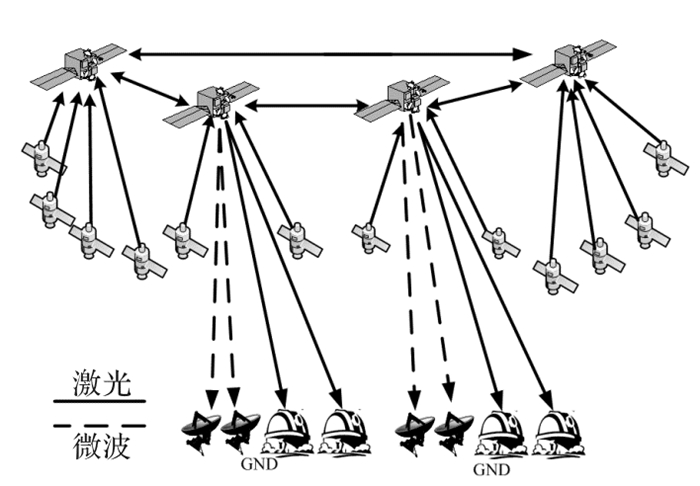
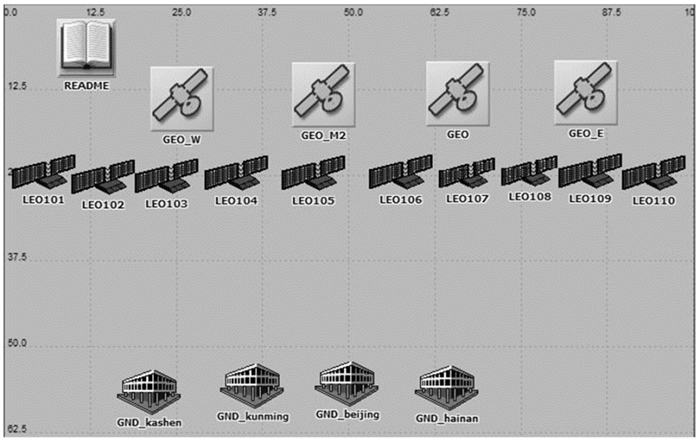
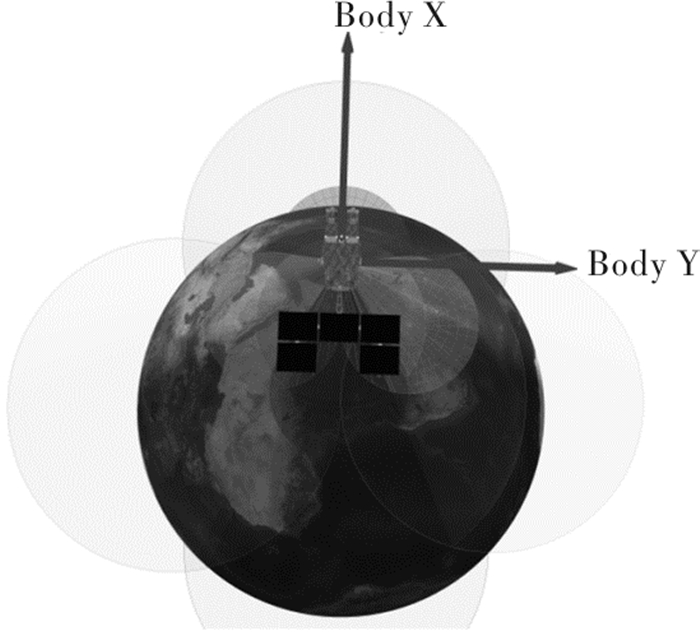
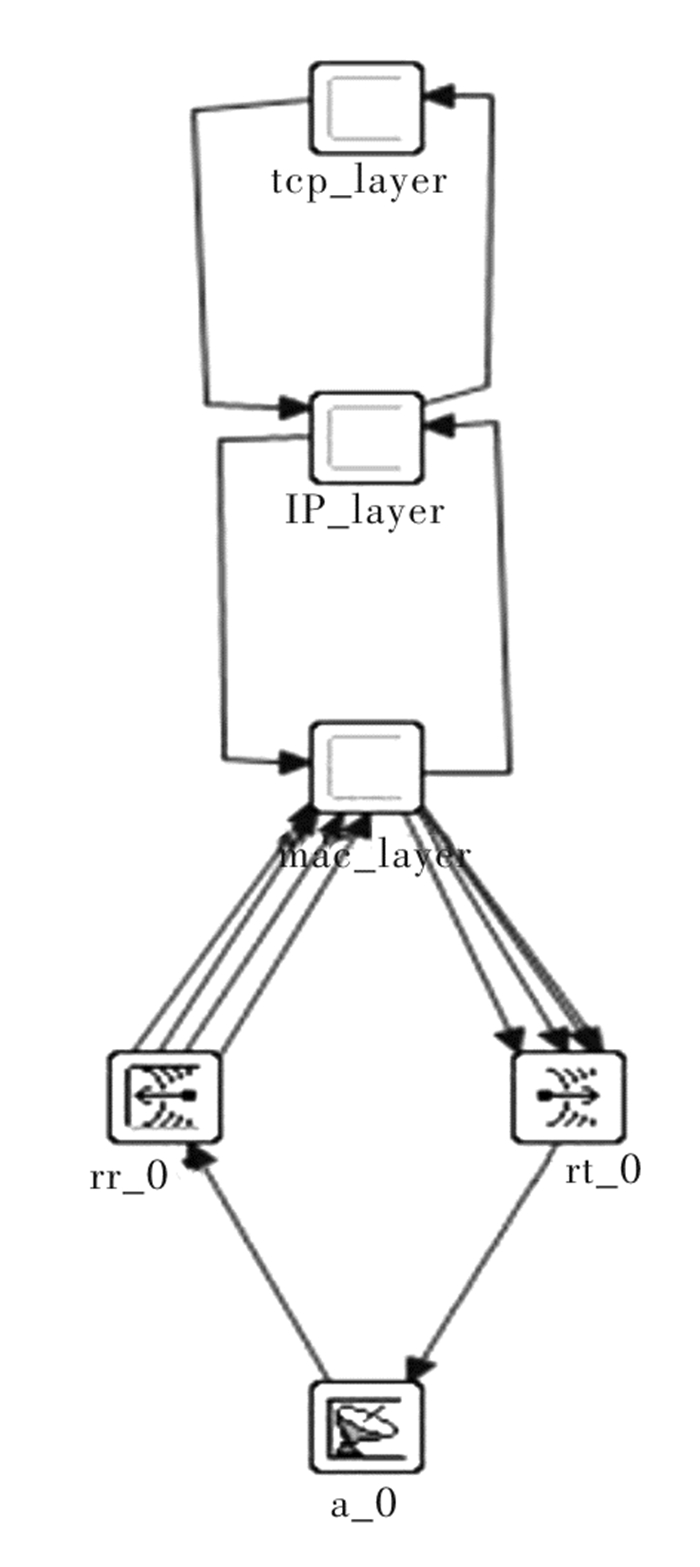
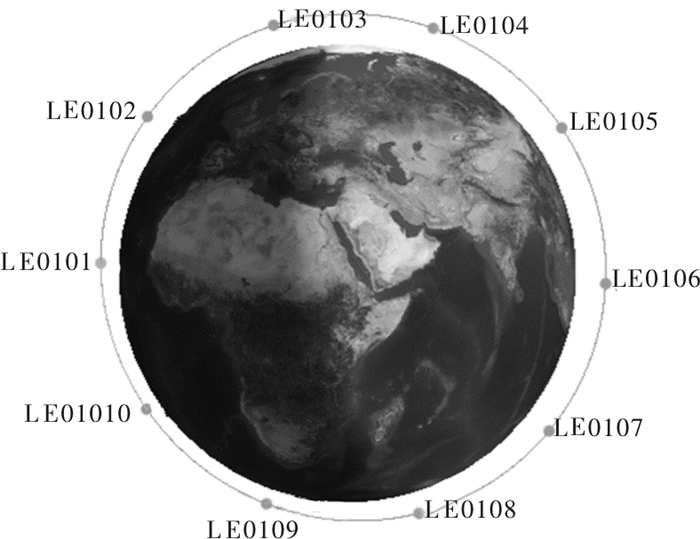
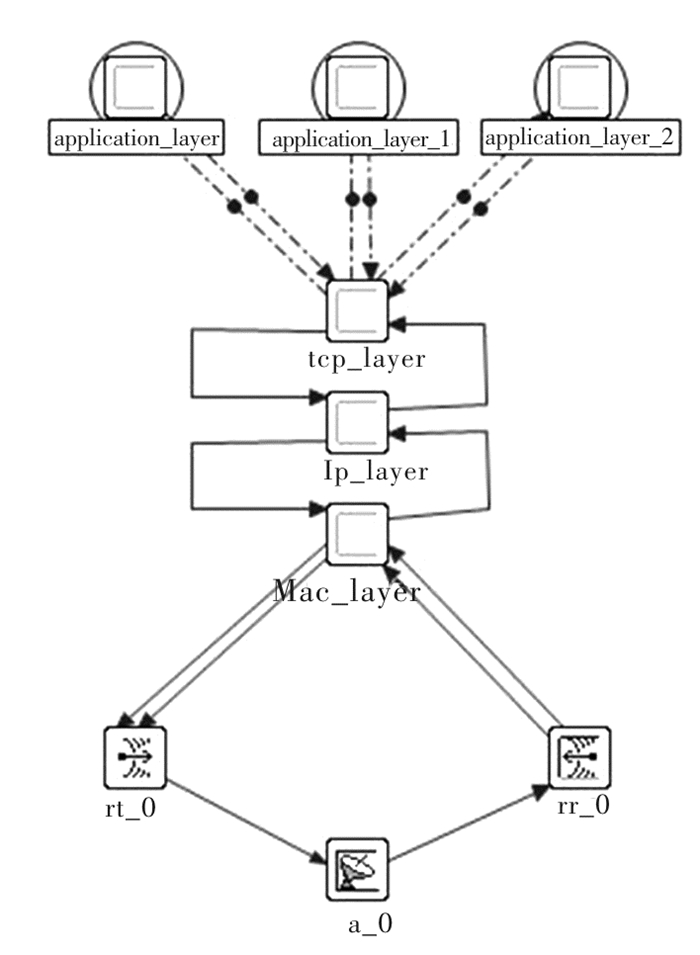
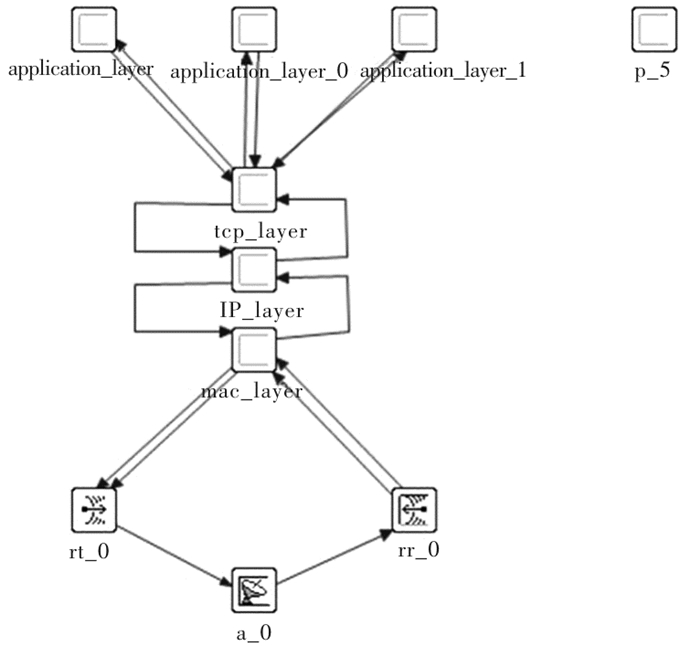
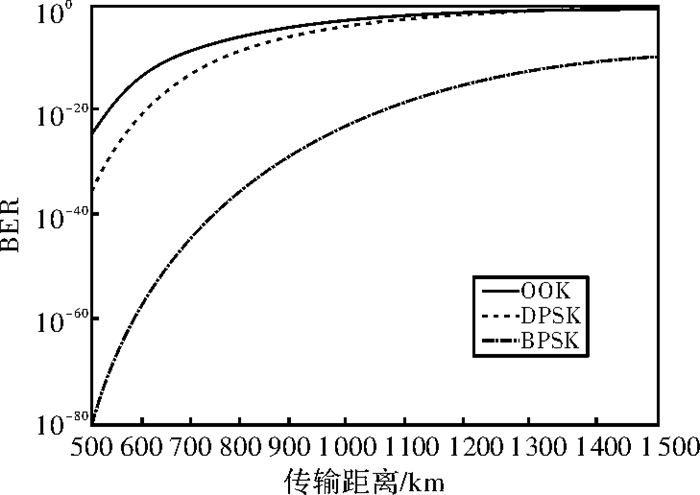

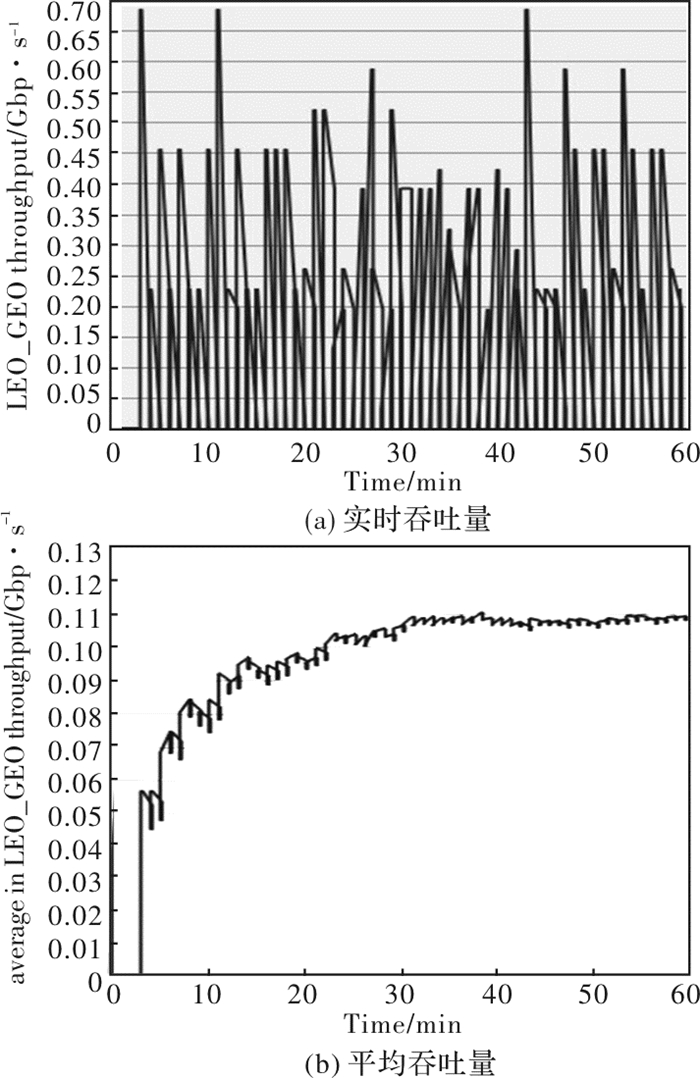


 陕公网安备 61011302001501号
陕公网安备 61011302001501号 